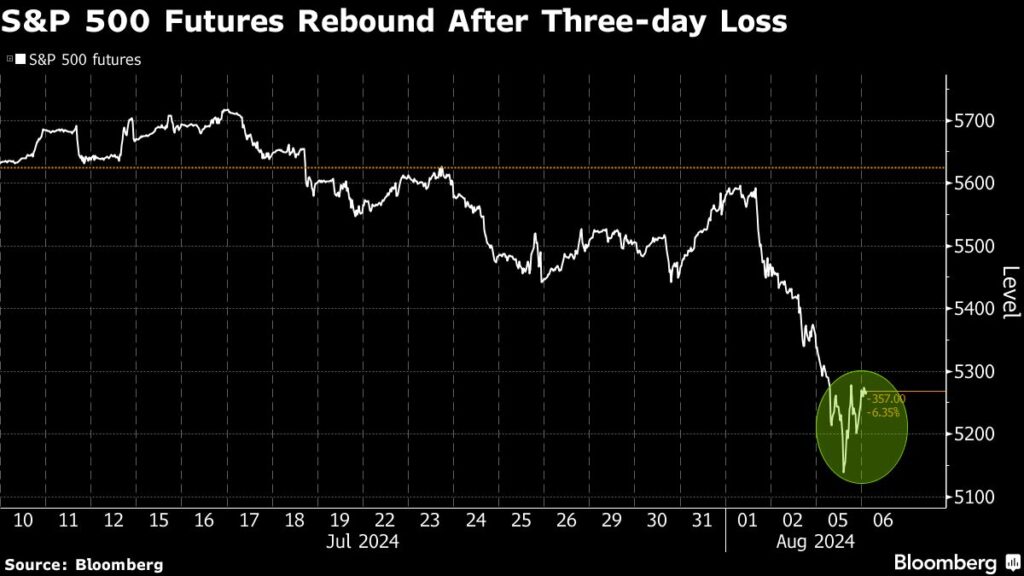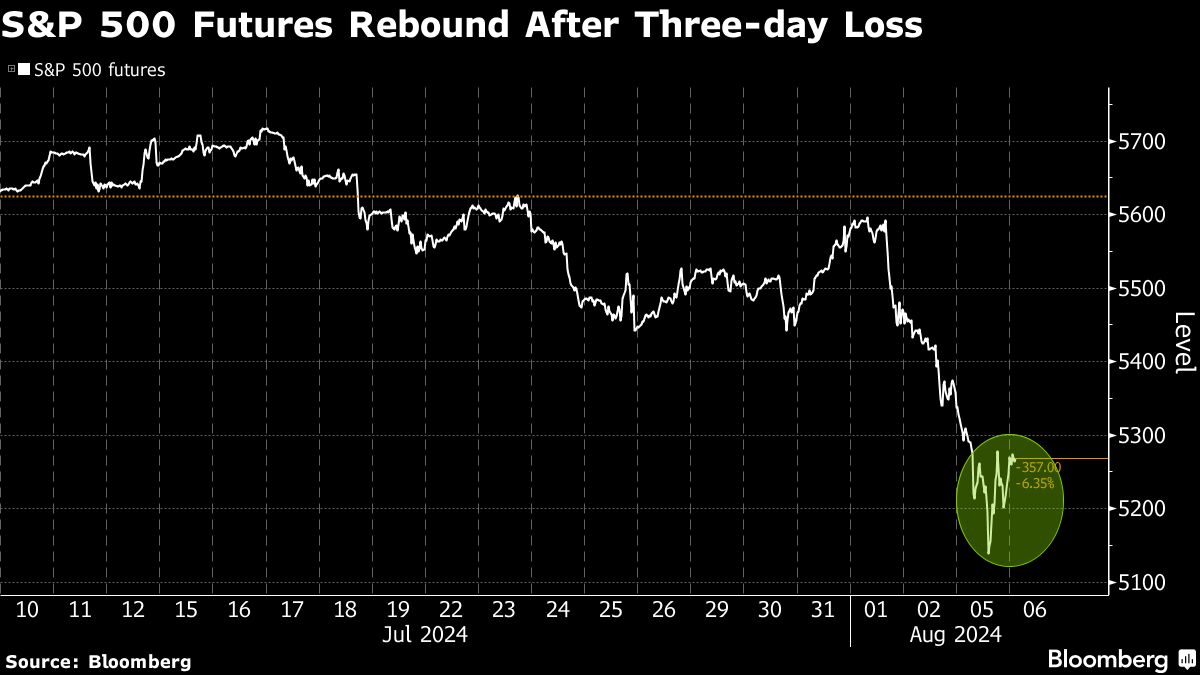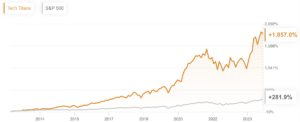US Stock Futures Bounce Back After Three-Day Global Selloff


(Bloomberg) — US stock futures rose, as dip buyers emerged after global equities witnessed a three-day selloff on concerns of a possible slowdown in the world’s largest economy and extreme valuations in the technology sector.
Most Read from Bloomberg
Futures on the S&P 500 Index were up 1.5% as of noon in Hong Kong on Tuesday while contracts on the Nasdaq 100 rose 2.1%. Markets bounced back elsewhere as well, with Japan’s Topix jumping about 10% as the yen weakened after a five-day surge against the US dollar.
The S&P 500 fell 6% in the past three sessions. The turmoil was sparked by data last week showing a rise in US unemployment, causing investors to worry whether the Federal Reserve is moving to quickly enough to cut interest rates in order to stave off a recession.
Risk-off trade accelerated the recent cooling of the global artificial intelligence rally, which had driven stocks to record highs just a few weeks ago. The question is whether the losses will extend, and if so how much.
“The actual equity market selling was mild relative to the panic expressed over social media in the past 24 hours,” Mike O’Rourke, chief market strategist at Jonestrading, wrote in a report. “A 10% or more correction is absolutely appropriate amid such market strength.”
The easing of the yen provided some relief Tuesday after sharp gains in the currency as the Bank of Japan raised interest rates last week. That had sparked an unwinding of carry trades, or borrowing at low rates in Japan to fund purchases of higher-yielding assets elsewhere, such as technology stocks.
“A recession is unlikely in the US unless it is proceeded by a financial crisis that causes an economy-wide recession,” Ed Yardeni of Yardeni Research wrote in a report. “Perhaps the carry trade calamity is such a financial crisis and will cause a credit crunch and a recession? We don’t think so.”
Concerns of an abrupt downturn were somewhat allayed by numbers Monday showing the US services sector expanded in July, after the worst contraction in four years a month earlier. Economic data releases over the coming weeks will be key to gauging the Fed’s next move and the direction of stocks.
“One print alone is not enough to shift the narrative on growth fears,” JPMorgan Chase & Co.’s Andrew Tyler wrote in a note to clients. “To see a decisive rebound, we need to see consecutive positive surprises in macro data, including retail sales and, more importantly, a positive shift in the September 6 nonfarm payrolls.”
Most Read from Bloomberg Businessweek
©2024 Bloomberg L.P.








